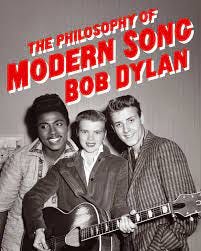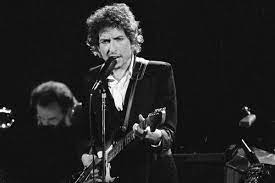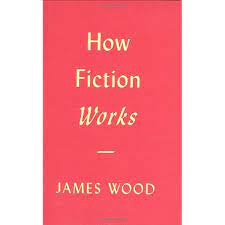In his 2008 book How Fiction Works, New Yorker literature critic and academic James Wood examines the building blocks of stories. The work opens with a chapter called Narrating, in which he writes: “The house of fiction has many windows, but only two or three doors.” He goes on to list the ways a human can tell a story – in the third person or the first, or “perhaps the second person singular” though, he allows, there are not many successful examples of that one.
Then Wood looks at the trustworthiness – “reliability” – of narration in each voice. He cites Jane Eyre as a reliable first-person narrator and breaks down why. By page 8, the reader is drawn into a series of meditations on the act of narration, discovering how slight changes in orientation, and, later, tone and technique, coalesce into an imagined world.
The book makes a big promise: Read this to understand the inner workings of the high-wire act of writing fiction. It doesn’t always succeed page to page, but it does equip readers with lenses to use as they dive into a new work. It offers ways of thinking about sentences, paragraphs, story lines.
Bob Dylan’s The Philosophy of Modern Song makes a similarly grand promise: Read these 66 short essays about 66 pop songs, written by one of the most revered songwriters in history, and you’ll begin to recognize and appreciate the often-unstated aesthetics that shape the form.
This is, of course, an outsized promise: Music is an abstract art, even when visuals are attached to it and the lyrics crawl along on the screen. To write about it is to chase vapors and cloud outlines; to dissect its mysteries one by one is to profoundly miss the point.
A wiley old hand at mixing the plausible with the preposterous, Dylan mostly avoids the nuts, bolts and gasketwork under the hood of a song; he prefers instead to circle its construction like he’s homing in on prey, describing its attributes in listlike spasms of images. Sometimes he comes across as a scholar, or a trickster; sometimes he slides into the weary overnight DJ persona of his beloved Theme Time Radio Hour. One of his jags, loosely on the theme of reincarnation, is found in the chapter about Dion and the Belmont’s version of Rodgers and Hart’s “Where or When:” “The handshake, the glad hand, the same coincidence time after time. The kissing, embracing, breaking apart and coming together, being rogueish and playful, teasing, slapping and hitting – busting a gut – putting each other in stitches, yukking it up and rejoicing good naturedly.”
These charming evocations and perambulations tell us something about the song, sure, and lead to insights about the specific performance that is Dylan’s focus. But more broadly, they’re addressed to the ineffable romance of song itself, the art behind the art. That instant aura that rushes in with the first notes as they’re recognized and then is somehow sustained throughout, the three-minute miracle that never gets old. In his curmudgeonly essay on Hank Williams’ “Your Cheating Heart,” Dylan laments that current songs don’t inspire this type of recurring wonder very much anymore: “All songs (now) are about one thing and one thing specifically, there is no shading, no nuance, no mystery…Perhaps this is why music is not a place where people put their dreams at the moment; dreams suffocate in these airless environs.” Heavy! Also true! And the sentence that convinced me to write on this for Echo Locator (where our mission statement reads: “Thoughts on nearly vanished sounds, spirits, ideas.")
Throughout the book, which is loaded with wonderful photographs yet suffers from an overly busy art-direction scheme, Dylan marvels at songs as a kind of unseen magnetic sound-force, pulling listeners out of one reverie and into another. He encourages listeners to think about songs not as commercial products, but rather as living breathing worlds to inhabit.
Conjuring these realms through detailed and disciplined imagery, he uses the same sly juxtapositions of Form and Vibe that illuminate his own songs. He creates eccentric little novellas inspired by the characters in the songs, gives them backstories and motivations, traces their exploits from dive bars to bedrooms to the cracked vinyl seats of an escape car. His fast, reflexive riffs are thematically aligned with the original narratives, and sometimes cadenced to parallel the rhythms of the lyrics. But they’re clearly alternate romances, musings about roads not taken. In the “Where or When” chapter, he’s so busy being novelistic he misses the chance to celebrate the stone-simple yet heart-stirring climax of the song – Rodgers’ major-scale ascending theme, a methodical and majestic device that’s executed deftly by Dion (and Frank Sinatra and many others) and stands as a textbook lesson in melodic contour.
The Philosophy of Modern Song has already elicited howls of outrage for the way Dylan portrays the female characters in some songs, and for its inexplicable neglect of female artists and songwriters. This is more than a shame of omission; it feels willfully perverse. Any work purporting to offer an aesthetic argument about pop music that devotes pages to Cher’s “Gypsies, Tramps and Thieves” (one of several TV-variety-hour staples celebrated here) while overlooking the work of Joni Mitchell is not a serious aesthetic or philosophical inquiry into popular music. At all. Full stop.
Reading these pieces, I got the sense that Dylan’s recentish excursion into the Great American Songbook, via the 2017 release Triplicate, had a larger influence on his thinking than I previously perceived. Not just because he’s talking songwriting as mystical craft, but because he so clearly views the interpretation of the featured songs as in some way linked to their authorship. In this formulation, popular song is a relay game, a process in which the outline on the sheet music is transformed into the unwritten language of the heart, sometimes by the author and sometimes by a subsequent interpreter generations later. Dylan certainly knew this when he was writing Highway 61 Revisited and Blonde On Blonde and all the rest; his songs are so tonally specific they resist glib re-imagining.
Still, a measure of a song is in how (or if) it endures – and, more importantly, changes – over time. This might be part of what Dylan drew from the act of interpretation. When he soft-shoes through “Here’s That Rainy Day” or “Stardust,” he joins a parade of esteemed, freakishly gifted vocalists who’ve preceded him. Each of them is engaged in the same work: Searching for an approach that celebrates elements of the composer’s intent — while communicating something deeply personal through small nuances and slight asides and woeful deep breaths. Those devices might seem like phrasing decisions. But over time, the split-second shadings accrue into something more. They become an approach. An identity. An expression of how singing works. An aesthetic argument. An individual philosophy.
And here’s the thing about that: Songs contain multitudes. There is no one prevailing philosophical argument that covers the waterfront. There are as many approaches to songs as there are singers. Dylan knows this. He speaks to this idea throughout his book, though never hits it straight on in a preface, never plainly maps the territory covered by his “philosophy.” Which brings us to another problem with this rambunctious, shapeshifting, wonderfully written entertainment: The aggrandizing title. This isn’t “The” Philosophy of Modern Song. It's “A” Philosophy. Not the only one. One of many.
Yes, we have a digital suggestion box. Please share your favorite overlooked/underloved records at: echolocatormusic@gmail.com.










Well said!! Thank you!!